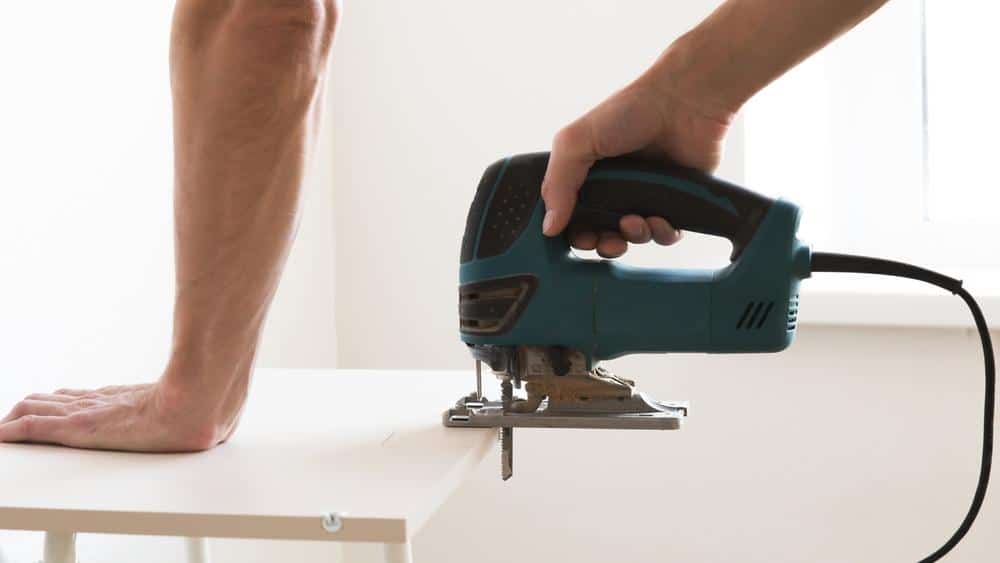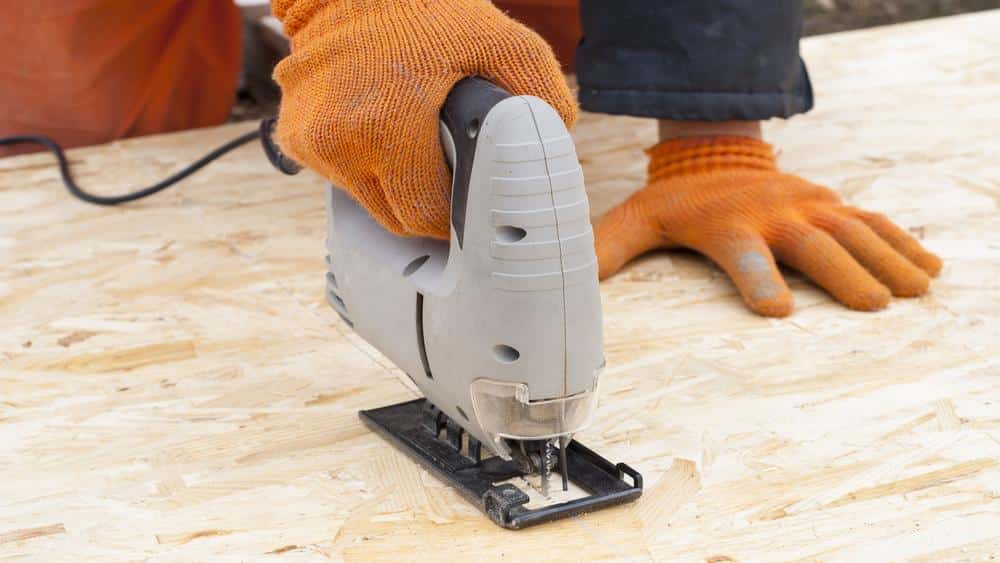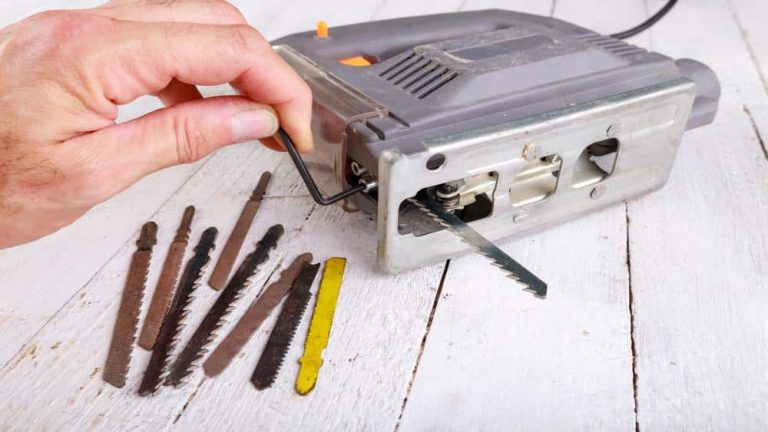This article will explore how to cut plywood with jigsaw. It will provide readers with step-by-step instructions on how to achieve clean, precise cuts with minimal splintering. We’ll discuss everything from blade selection, appropriate saw settings, techniques to prevent splintering, safety measures, and the importance of maintaining a moderate cutting speed. After reading this comprehensive guide, DIY enthusiasts and woodworking beginners will be well-equipped to tackle their plywood-cutting projects confidently.

1. How to Cut Plywood with a Jigsaw
Cutting plywood with a jigsaw is a handy skill for every DIY enthusiast to master. Not only does it make your projects easier, but it also offers the satisfaction of creating something with your own hands. But how does one do it properly? Let’s find out!
2. Understanding the Basics of Cutting Plywood
What is Plywood?
Plywood is a versatile and durable material used in construction and furniture making. It’s composed of multiple layers of wood veneer glued together, which gives it strength and stability.
Why Use a Jigsaw?
A jigsaw is a powerful tool that makes curved and straight cuts in plywood. The correct technique and blade can produce smooth, clean cuts with minimal splintering.

3. Choosing the Right Blade for Cutting Plywood
Tooth Count and Sharpness
The tooth count and sharpness of the blade are crucial for cutting plywood. A blade with a high tooth count and sharpness helps to minimize splintering. Remember, a sharp blade is a safe blade!
Blade Width
The width of the blade also matters. Use a narrow blade for curved cuts and a wider one for straight cuts.
Special Blades: Reverse-Tooth and Carbide-Tipped
Using specialized blades, like reverse-tooth or carbide-tipped ones, can further enhance your cutting experience. These blades are designed to cut cleanly through plywood, reducing splintering.

4. Practical Techniques for Plywood Cutting
Use of Masking Tape
Masking tape to mark your cutting line can help keep your cuts straight and precise. Plus, it can prevent surface splintering.
Speed Control
Maintaining a moderate cutting speed is crucial. If you go too fast, you risk damaging the plywood or the blade. But go too slow, and you might cause unnecessary strain on the jigsaw and the blade.
Using a Splinter Guard
A splinter guard can help keep your plywood free of splinters during cutting, ensuring a smooth finish.
Scoring the Cut Line
Scoring the cut line with a utility knife before cutting can help reduce splintering, leading to cleaner cuts.
Importance of Support and Safety Measures
Ensure the plywood is adequately supported during the cutting process to prevent accidents. Moreover, always wear safety gear while working with power tools to protect yourself.
Discover the art of using a jigsaw safely with our comprehensive guide, catering to novices and experts alike! Uncover vital safety measures and valuable tips in our article “How to Use a Jigsaw Safely: For Novice to Expert!” Read it now!
5. Mistakes to Avoid
Avoid excessive forward pressure, which could lead to broken teeth or a snapped blade. Additionally, don’t forget to lubricate your jigsaw for smoother action.
6. FAQ (Frequently Asked Questions)
Can you use a jigsaw to cut plywood?
Absolutely! A jigsaw is one of the most versatile tools and is highly efficient in cutting plywood. What’s important is that you use the correct blade and techniques for a smooth, splinter-free cut. You also need to adjust the jigsaw settings depending on the plywood’s thickness.
How do you cut plywood without chipping a jigsaw?
Several techniques can be employed to cut plywood without chipping when using a jigsaw. These include using a high-tooth count, sharp, and ground tooth blade, slowing the cut speed, marking your cut line with masking tape, or scoring it with a utility knife. Furthermore, you can employ a zero clearance insert or a backer board to ensure smoother cuts and avoid splintering.
What are the best jigsaw blades for cutting plywood?
The choice of blade dramatically impacts the quality of cuts on plywood. A high-tooth count blade with ground teeth is recommended for plywood. Some of the best jigsaw blades for plywood include the Bosch T101AO, Gunpla 15pc Blade Set, DEWALT DW3742C 14pc Blade Set, Bosch T308B, DEWALT DW3795H, and WORKPRO 36-Piece, amongst others. These blades are highly rated due to their durability, sharpness, and ability to make precise cuts in plywood.
Which two tools are best for cutting plywood?
The jigsaw and the circular saw are the best tools for cutting plywood. The jigsaw is excellent for making curved and intricate cuts, while the circular saw is perfect for making long, straight cuts. Both tools offer precision and versatility, and when used properly, they can deliver splinter-free cuts.
How thick wood can jigsaw cut?
The cutting capacity of a jigsaw largely depends on the type of blade used. However, most jigsaws can comfortably cut up to 1.5 to 2 inches of thick wood. For thicker wood, it’s advisable to use a circular or reciprocating saw.
Can a jigsaw cut 1 inch wood?
Yes, a jigsaw can comfortably cut 1-inch wood. It’s crucial to use a sharp blade and adjust the settings of your jigsaw appropriately to ensure a clean and precise cut.
How do you use a jigsaw for beginners?
Using a jigsaw is relatively straightforward, even for beginners. First, you need to mark your cut line on the wood. Then, ensure the jigsaw is off before you insert the appropriate blade. Next, align the blade with the cut line and turn on the jigsaw. Guide the jigsaw along the cut line slowly and steadily. Always remember to wear safety gear and avoid forcing the jigsaw. Let it cut at its own pace for the best results.
7. Conclusion
In conclusion, how to cut plywood with jigsaw, Cutting plywood with a jigsaw doesn’t have to be a daunting task. With the right blade, techniques, and safety measures, you can easily make precise cuts. So why wait? Get started on your next DIY project today!





